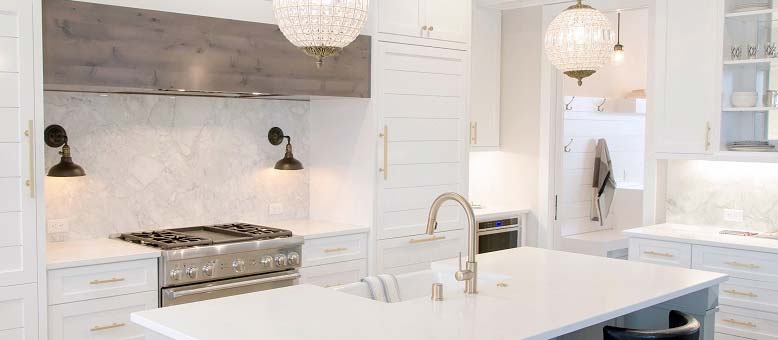How to flip a house: what you need to know
Thinking of buying a house to flip? Here’s what to look for, the steps to take, and how to get the best bang for your buck when you sell.
Thanks to the popularity of house-flipping shows, many people are interested in buying a house to renovate and flip. However, the average person might not know just what’s involved with finding, financing, and fixing a home to sell it.
When you know what to look for, you’ll get a better idea of what steps to take, where to focus your attention, and how to spend your money.
Before you buy and renovate a property to sell it, here’s what to consider.
How to flip a house
First, do your research! This will help you save time, money, and headaches and maximize both the property value increase and your profit. Research neighbourhoods to understand what similar sized houses sell or rent for, get to know the popular trends or design styles of the area, and keep an eye on things like distance to school, public transit, stores, and restaurants.
Call a (construction) friend
If you’re new to house flipping, you might not know how to identify potential property problems which updates deliver the best value, or how to manage a full renovation. That’s where a reliable contractor makes all the difference.
Before booking viewing appointments, ask a trusted contractor or friend/family member with construction experience to come along and check out potential properties with you. Here’s how they can help:
- A good contractor can tell you about home improvement and remodeling ideas to increase the home’s value.
- They should know about the permits or bylaws you’ll need before any work can begin.
- If you intend to do major updates, they may know architects who can help safely plan the renovations.
A contractor or construction expert can also point out what to be aware of behind the walls - things such as plumbing, HVAC and electric, structural needs, and insulation requirements for both temperature control and soundproofing/dampening.
Identifying these hidden issues can help you fine-tune your offer, so you don’t pay too much for a house that needs expensive repairs.
How to make a profit flipping houses
To make a profit flipping houses, you’ll need a home that you can sell for a price that recoups the cost of purchasing the property, the renovation and repair costs, and puts money in your pocket.
To figure out the maximum price to pay for a property, use the 70% rule of real estate investing. This rule says you should pay no more than 70% of the ARV (after repair value) of the home, minus the cost of the repair. Here’s how that works:
If you think a home would sell for $500,000 after the renovations, and it would cost $20,000 to repair it, your highest offer should be $330,000 [($500,000 x 0.70) - $20,000.]
How much money do I need to flip a house?
When it comes to financing a house flip, you need access to cash. Depending on your situation, you’ll need money for:
- The down payment
- Closing costs and legal fees
- Land transfer tax
- Repairs
- Renovations
- Permits
- Down payment for the contractor and architect
- Insurance (keep in mind you’ll need special insurance if the house will be vacant during the renovations)
Before making an offer on a property, consider how you’ll pay for the renovations. There are four basic options:
- Pay cash for everything: the downside of this is that your cash is then tied up in the project and you won’t get it back until the property gets sold.
- Use a credit line: this could be secured against the property or even another property, such as your principal residence, or it could be unsecured. The benefit to using a credit line is that you only pay interest on the money you borrow, and you can use the line of credit for bills, repairs, and supplies as they come in. It also makes it easy to track your expenses come tax time.
- Take a mortgage/build the costs into the mortgage: you can take a mortgage on either your principal residence or on the investment property, and build your renovation costs right into the mortgage, rather than paying it all out of pocket up front. This is convenient, and it can be a cheap way to borrow money. However, you’ll start paying interest on the funds as soon as you receive them.
- Combine these methods: this gives you some flexibility and minimizes your interest costs. For example, you may pay cash for the down payment, with a mortgage on the investment property to be flipped. Then use a secured or unsecured credit line to pay for the renovations and repairs as they occur.
Risks of flipping a house
When it comes to buying real estate for flipping, there are some risks to using borrowed money.
For example, you could get tempted to overspend on renovations and repairs. Or you could invest in improvements that don’t make the house worth more to potential buyers. And then you might find you need to carry mortgage loan payments if the house doesn’t sell.
That’s why it’s so important to research the features that are popular with buyers in your area.
Best bang for your buck updates and renos
Not all renovations are created equal when it comes to an investment house. Which updates will give you the best bang for your renovation buck?
While this partly depends on your location, in general flooring and paint make the biggest difference, especially in kitchens and bathrooms, yet they’re relatively inexpensive. Also, consider updating exterior and interior lighting and electric panels, hardware fixtures and pulls throughout the house.
Pay close attention to easy-to-update exterior features to freshen up the curb appeal; simple updates like paint, planters, and new house numbers can make a big difference.
Updates to avoid
You might be tempted to make dramatic, trendy updates, but think twice before doing so on a home you plan to flip. Specifically, quirky, personal updates could be expensive for a potential buyer to fix/replace.
Also, keep in mind what your ideal buyer will do with the property. Although some modern renovations can work for flips to be used as primary residences or even homes listed as Airbnb units, stay away from them if you’re buying real estate for a rental property. They’ll soon get dated and future landlords don’t want to have to spend more money in the near future.
What to watch for when flipping a house
In addition to voiding overspending on a house purchase or renovation budget or making trendy updates, there are a few other things to watch for when flipping a house:
- Remember that while you can renovate and repair, you can’t change the location of a property so choose an area that buyers want to live in.
- Look for properties with basements or third floors that you could turn into rental suites.
- Review the Canada Revenue Agency guidelines on capital gains on investment properties so you’re aware of current taxation laws on selling investment property.
- Give yourself a financial cushion to account for unexpected costs that could get uncovered as you start working on repairs.
Flipping houses can be a rewarding and interesting way to make some extra money – as long as you know what you’re getting into. Do your property and financial research ahead of time to best position your house flipping project for success.


